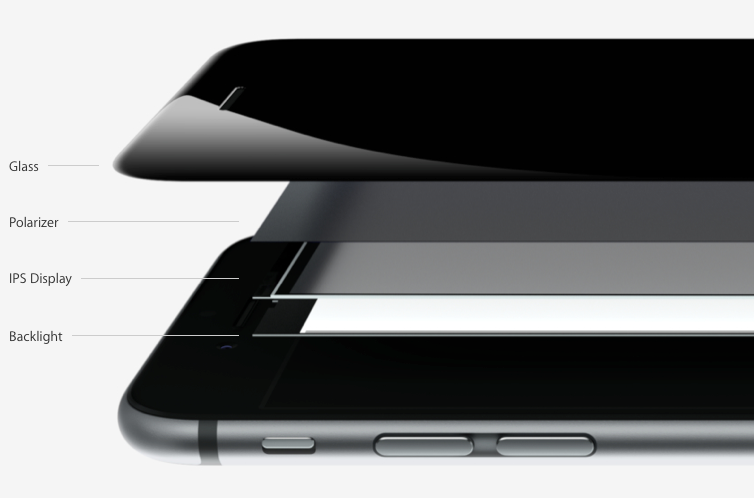Unhappy with the in-cell screen process used in production of iPhone displays which is plagued with lower touch sensitivity on screen edges, Apple is reportedly considering a return to glass-on-glass (G/G) touchscreen panels for an ‘iPhone 7,’ a technology it ditched with the release of the iPhone 5 in the fall of 2012.
According to a somewhat sketchy report published Wednesday by DigiTimes, Apple is currently sampling glass-on-glass touch samples for 2016 iPhones.
If true, the iPhone 7—or whatever a 2016 iPhone ends up being named—will feature better touch accuracy, improved Multi-Touch performance and better touch detection on screen edges. In addition, glass-on-glass technology would permit the company to develop a bezel-free iPhone and support 4K resolutions.
“In-cell touch panels also make it difficult for vendors to pursue higher resolutions including Ultra HD (4K) due to current bottlenecks,” DigiTimes said.
Touch panel makers have reportedly begun sending samples of fully laminated G/G technology to Apple and Corning. Apple supplier Asahi Glass has also reportedly sent glass samples. The Cupertino firm will use in-cell technology for the iPhones released in 2015.
Today’s report reaffirms recent findings by DigiTimes Research, based on supply chain data and market observers, that concluded a switch to G/G technology would theoretically allow for an iPhone with an ultra-sharp screen and nearly bezel-less appearance.
“While it is still not 100 percent clear what Apple will decide, the company has been impressed with the AMOLED display and G/G touch panel sensitivity and features found in the Apple Watch,” reads the analysis.
Some of the benefits of using glass-on-glass touchscreens include the following perks:
- G/G touch panels may help Apple develop bezel-free iPhones.
- Apple may be able to outfit future iPhones with Ultra HD (4K) screens.
- G/G has better touch sensitivity than in-cell tech, especially on the edges.
- G/G doesn’t exhibit a multitouch lag when swiping rapidly.
- Apple’s supply chain could be more simplified.
- Overall production time would be cut down.
- Glass-type touch panel is optically better than film-type one.
In general, capacitive touch technology that Apple’s implementation of Multi-Touch depends on can be either glass- or film-substrate produced. iPhones prior to the iPhone 5 used used glass-substrate capacitive touchscreens that form the X-axis sensing electrode on the upper surface of a glass substrate and Y-axis sensing electrode on the bottom.
Starting with the iPhone 5 in 2012, iPhones switched to in-cell technology which eliminates a layer by building the capacitors inside the LCD assembly itself, which allows for a notably thinner appearance of the screen and sharper images that appear as if painted on the surface of the glass.
Source: DigiTimes
